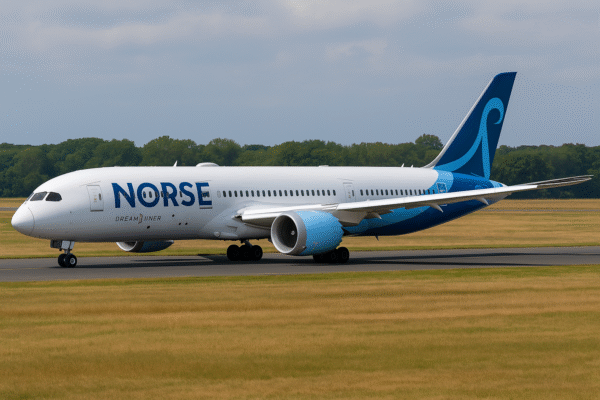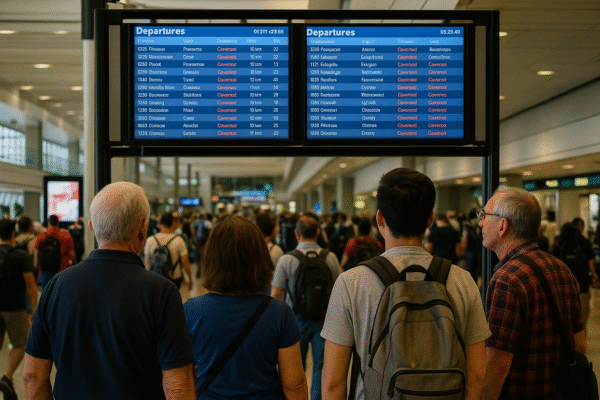Global Tourism Eyes $16 Trillion Contribution by 2034—But Major Challenges Loom
The global travel and tourism (T&T) industry is on track for an impressive rebound, with new forecasts projecting a monumental contribution of $16 trillion to global GDP by 2034. Spearheaded by a collaborative report from the World Economic Forum, Kearney, and the Ministry of Tourism of Saudi Arabia, the outlook reveals a travel sector that is recovering fast—and growing even faster.
After weathering the crippling impact of the COVID-19 pandemic, the T&T sector accounted for nearly 10% of global GDP in 2023, reflecting a sharp rebound driven by pent-up demand, stronger international connectivity, and digital accessibility. Yet, behind the promising numbers lie a series of complex, potentially disruptive challenges that could stunt this growth trajectory.
A Booming Industry With Fragile Foundations
Tourism has become one of the world’s most dynamic economic engines, powering employment, infrastructure development, and cultural exchange. As international mobility increases and digital nomadism becomes mainstream, the sector’s growth is expected to surpass the global economy’s pace, with annual GDP growth projected at over 4% through 2034.
The industry is forecasted to support more than 30 billion cross-border trips annually by the next decade, underlining its enormous influence on modern life. However, such explosive growth depends on the sector’s ability to address climate impacts, labor shortages, geopolitical tensions, and aging infrastructure.
According to Bob Willen, managing partner at Kearney, “The sector must adapt to a world that demands sustainability, inclusivity, and resilience. The future of tourism will depend not just on where people go, but how responsibly they get there.”
Emerging Destinations Lead the Way
While mature tourism economies like France, Japan, and the United States remain strong contributors to national GDP through well-established tourism hubs such as Paris, Tokyo, and New York City, new regions are stepping onto the global stage.
Countries such as Saudi Arabia, Indonesia, and Sri Lanka are experiencing a surge in tourist arrivals thanks to large-scale government investments and destination marketing. Saudi Arabia’s Red Sea Project, for instance, aims to transform its coastline into a global luxury tourism hotspot aligned with Vision 2030.
However, these fast-growing destinations face the immense challenge of building a workforce and infrastructure to sustain long-term growth. As visitor numbers swell, demand for hospitality workers, public services, and environmental protections will intensify, requiring nations to balance short-term gains with long-term capacity planning.
Asia’s Expanding Influence in Global Tourism
Asia is poised to play a pivotal role in shaping the future of global tourism. Countries like China, Thailand, South Korea, and Vietnam have already seen tourism emerge as a critical pillar of economic activity, with direct GDP contributions from tourism exceeding 7% in several Asian economies.
With inbound and outbound travel on the rise, infrastructure across airports, rail, and digital services must rapidly evolve. The report emphasizes that Asia’s tourism boom must be paired with robust sustainability measures to prevent long-term ecological and social degradation.
Critical Risks Facing the Travel Industry
Despite the optimism, the travel and tourism sector faces several looming threats that could derail its progress:
1. Climate Change and Environmental Degradation
Tourism is a known contributor to carbon emissions and waste, with the aviation industry alone responsible for roughly 2.5% of global CO₂ emissions. Overall, the industry contributes nearly 10% of global energy use and 7% of worldwide waste production. Rising global temperatures, extreme weather, and ecosystem fragility could severely disrupt travel experiences and threaten destinations.
Destinations such as Maldives, Venice, and Pacific Islands are already facing climate-related disruptions, including sea-level rise and biodiversity loss. Without sustainable tourism policies, the industry could face up to $6 trillion in losses by 2030, the report warns.
2. Geopolitical Instability
Conflict zones and political instability continue to threaten global tourism. Ongoing wars in the Middle East, diplomatic tensions in East Asia, and regional disputes have disrupted air routes, created visa uncertainties, and instilled safety concerns among travelers. These risks can quickly trigger flight cancellations, declining bookings, and job losses in tourism-reliant economies.
3. Labor Shortages
Labor shortages—exacerbated by post-pandemic migration trends and industry burnout—have left hospitality and airline sectors struggling to operate at full capacity. From delayed flights to hotel understaffing, the lack of skilled labor directly affects visitor satisfaction and operational efficiency.
Investing in vocational training, worker protections, and career growth pathways is now essential to ensure service quality matches the sector’s rapid growth.
4. Infrastructure and Overcrowding
The infrastructure that underpins global tourism—airports, hotels, roads, and public transport—is increasingly outdated in many parts of the world. The pressure of mass arrivals can lead to overcrowding, service breakdowns, and environmental degradation in top destinations. Governments must ramp up investment in smart, sustainable infrastructure to support future tourism flows.
Sustainability as the Cornerstone of Future Growth
The report urges industry leaders and policymakers to pursue responsible tourism models that align profit with purpose. This includes:
- Promoting off-peak travel seasons to avoid overtourism
- Encouraging eco-certifications for hotels and tour operators
- Regulating short-term rentals to prevent housing shortages
- Prioritizing local partnerships to distribute tourism benefits equitably
- Investing in low-carbon transport solutions and green airport tech
Conclusion: A Crossroads for Global Tourism
The global tourism sector stands at a crossroads. With the potential to generate $16 trillion in GDP by 2034, its role in shaping economic recovery and cultural diplomacy is undeniable. But if left unchecked, the very growth that powers its expansion could lead to crisis.
To meet the future head-on, the industry must modernize its workforce, future-proof infrastructure, and commit to climate-aligned growth. Collaboration across governments, corporations, and communities will be vital to ensure that tourism remains not only profitable—but sustainable and inclusive.
As the world reimagines travel in the post-pandemic era, the greatest journey ahead may be how tourism learns to grow without leaving the planet—or people—behind.
For more travel news like this, keep reading Global Travel Wire
















